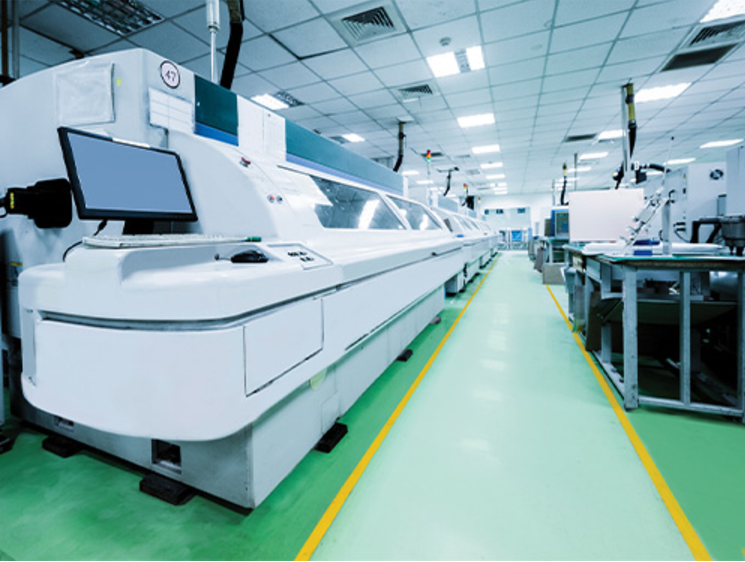Graphene in Thermal Management: Unlocking New Horizons in Heat Conduction
Effective thermal management is a critical challenge in various industries, especially as devices become smaller, more powerful, and more energy-intensive. Graphene, with its exceptional thermal conductivity and unique properties, is emerging as a revolutionary solution for heat dissipation and thermal management across sectors such as electronics, energy systems, and aerospace.

This article explores the role of graphene as a thermal conductor, its applications in heat management, and how it addresses contemporary challenges in technology and industrial processes.
1. Why Graphene for Thermal Management?
Graphene is an exceptional thermal conductor, with an intrinsic thermal conductivity of up to 5300 W/m·K under ideal conditions. This value far exceeds that of traditional materials such as copper (400 W/m·K) or aluminum (237 W/m·K). Its advantages include:
- High Thermal Conductivity: Enables rapid heat transfer and dissipation.
- Thinness and Lightweight Nature: Ideal for compact devices and portable systems.
- Mechanical Flexibility: Adapts to irregular surfaces, ensuring effective heat spreading.
- Chemical Stability: Performs well in extreme environments without degradation.
These attributes make graphene an excellent candidate for advanced thermal management solutions.
2. Applications of Graphene in Thermal Management
2.1 Heat Sinks and Spreaders
Graphene films and composites are being developed as heat sinks and spreaders in high-power electronic devices:
- Improved Heat Dissipation: Graphene layers distribute heat evenly across device surfaces, preventing hotspots.
- Compact Designs: Its thinness allows for ultra-slim heat sink solutions.
- Durability: Graphene-based heat sinks resist wear and tear, ensuring long-lasting performance.
Applications
- Smartphones and laptops.
- High-power LEDs.
- Data centers and server cooling systems.
2.2 Thermal Interface Materials (TIMs)
TIMs are used to fill microscopic gaps between heat sources and heat sinks, improving thermal contact. Graphene-enhanced TIMs exhibit superior performance:
- High Thermal Conductivity: Reduces thermal resistance between components.
- Flexibility and Adaptability: Ensures consistent contact over irregular surfaces.
- Eco-Friendly: Reduces the need for traditional, less efficient materials.
Applications
- Microprocessors and GPUs.
- Automotive electronics.
- Medical imaging devices like MRI scanners.
2.3 Flexible Electronics
In flexible and wearable devices, thermal management is crucial to maintain performance and user safety. Graphene’s flexibility and conductivity make it ideal for such applications:
- Heat Spreading Layers: Graphene prevents overheating in foldable displays and flexible circuits.
- Thin and Lightweight: Essential for wearable electronics like smartwatches and health monitors.
Applications
- Flexible OLED displays.
- Foldable smartphones.
- Wearable fitness trackers and medical devices.
2.4 Energy Systems and Batteries
Efficient thermal management in energy storage systems like lithium-ion batteries and fuel cells is critical for performance and safety. Graphene contributes to:
- Heat Dissipation in Batteries: Prevents thermal runaway and extends battery life.
- Thermal Management in Fuel Cells: Ensures consistent operating temperatures for efficiency.
Applications
- Electric vehicles (EVs).
- Renewable energy storage systems.
- Aerospace energy systems.
2.5 Aerospace Applications
Thermal management in aerospace systems must address extreme temperatures and weight constraints. Graphene offers solutions through:
- Lightweight Heat Shields: Protects spacecraft and satellites from high thermal loads.
- Thermal Control Coatings: Enhances heat radiation and absorption control in space environments.
Applications
- Satellite systems.
- Spacecraft thermal control panels.
- Heat-resistant coatings for high-speed aircraft.
3. Innovations in Graphene Thermal Management Materials
3.1 Graphene Composites
Graphene is integrated into polymers, metals, and ceramics to create composites with tailored thermal properties:
- Graphene-Copper Composites: Offer superior conductivity and mechanical strength for high-performance heat sinks.
- Graphene-Polymer Composites: Lightweight and flexible for consumer electronics.
3.2 Graphene Aerogels
Graphene aerogels combine high porosity with excellent thermal conductivity, making them ideal for thermal insulation and lightweight heat management.
3.3 Graphene Coatings
Sprayable graphene coatings can be applied to surfaces for rapid heat spreading and protection against temperature fluctuations.
4. Challenges and Future Directions
4.1 Challenges in Implementation
- Scalability: Producing large-area, defect-free graphene for industrial applications remains a hurdle.
- Cost: High production costs of graphene films and composites limit widespread adoption.
- Integration: Ensuring compatibility with existing manufacturing processes is complex.
4.2 Future Directions
- Cost-Effective Production: Advancements in graphene synthesis, such as chemical vapor deposition (CVD), promise to lower costs.
- Hybrid Materials: Combining graphene with other advanced materials for enhanced performance.
- Smart Thermal Systems: Integration of graphene-based materials into IoT-enabled thermal management systems for real-time monitoring and control.
5. Broader Industry Impact
Graphene’s role in thermal management extends beyond electronics to industries such as construction, automotive, and healthcare:
- Building Materials: Graphene-enhanced concrete and coatings for energy-efficient buildings.
- Automotive Heat Management: Improved heat dissipation in EVs and combustion engines.
- Medical Devices: Advanced thermal regulation in wearable and diagnostic equipment.
Conclusion
Graphene’s extraordinary thermal conductivity and versatility are transforming the field of thermal management. From compact electronics to space exploration, graphene-based materials provide efficient, lightweight, and durable solutions to complex heat dissipation challenges.
As graphene production becomes more affordable and scalable, its applications in thermal management will continue to expand, driving innovations in technology and industrial processes. Graphene is not just a material of the future—it is already shaping the way industries manage heat today.

